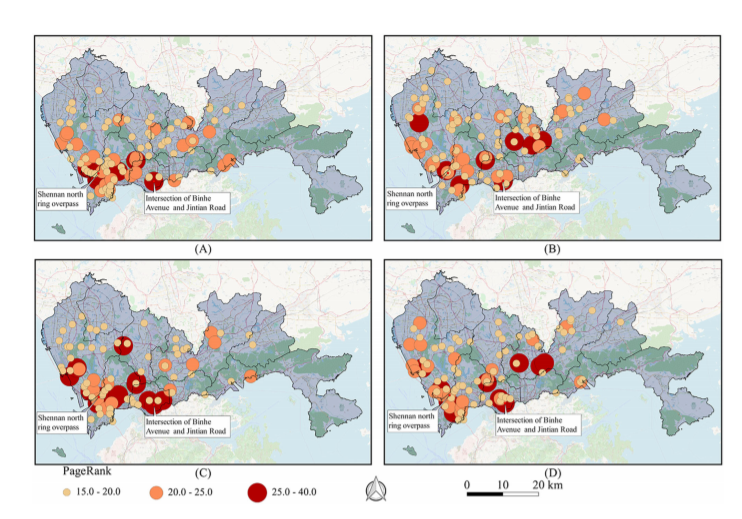Abstract
The development of geospatial big data makes it possible to study traffic-congestion issues. In particular, floating car data (FCD) is very suitable for it because FCD can help predict traffic-congestion bottlenecks and provide corresponding solutions to address traffic problems. Previous studies have discussed the impacts of rainfall on road speeds, but few studies have focused on the impacts of rainfall on the spatial distribution and changes in traffic-congestion bottlenecks throughout a mega-city. This article proposes an index calculation and clustering (ICC) model by integrating PageRank and clustering algorithms from multisource data, including rainfall data, FCD, and OpenStreetMap data. As the study area, we selected Shenzhen, which is the largest developed city in South China. The results demonstrate three peak periods of citizen travel, namely, 8:00-10:00, 14:00-16:00, and 18:00-20:00. Road speeds after rainfall decrease by 6.20% on weekdays and by 2.37% on weekends, and traffic-congestion areas increase by 23.53% and 20.65% on weekdays and on weekends, respectively. In addition, rainfall causes more significant effects on traffic conditions on weekdays compared with on weekends in Shenzhen. Compared with a traditional kernel density analysis, the proposed ICC model can offer a more thorough understanding of urban traffic-congestion areas, which can help policy makers optimize alleviation strategies. Index Terms-Clusterin

Q.E.D.









